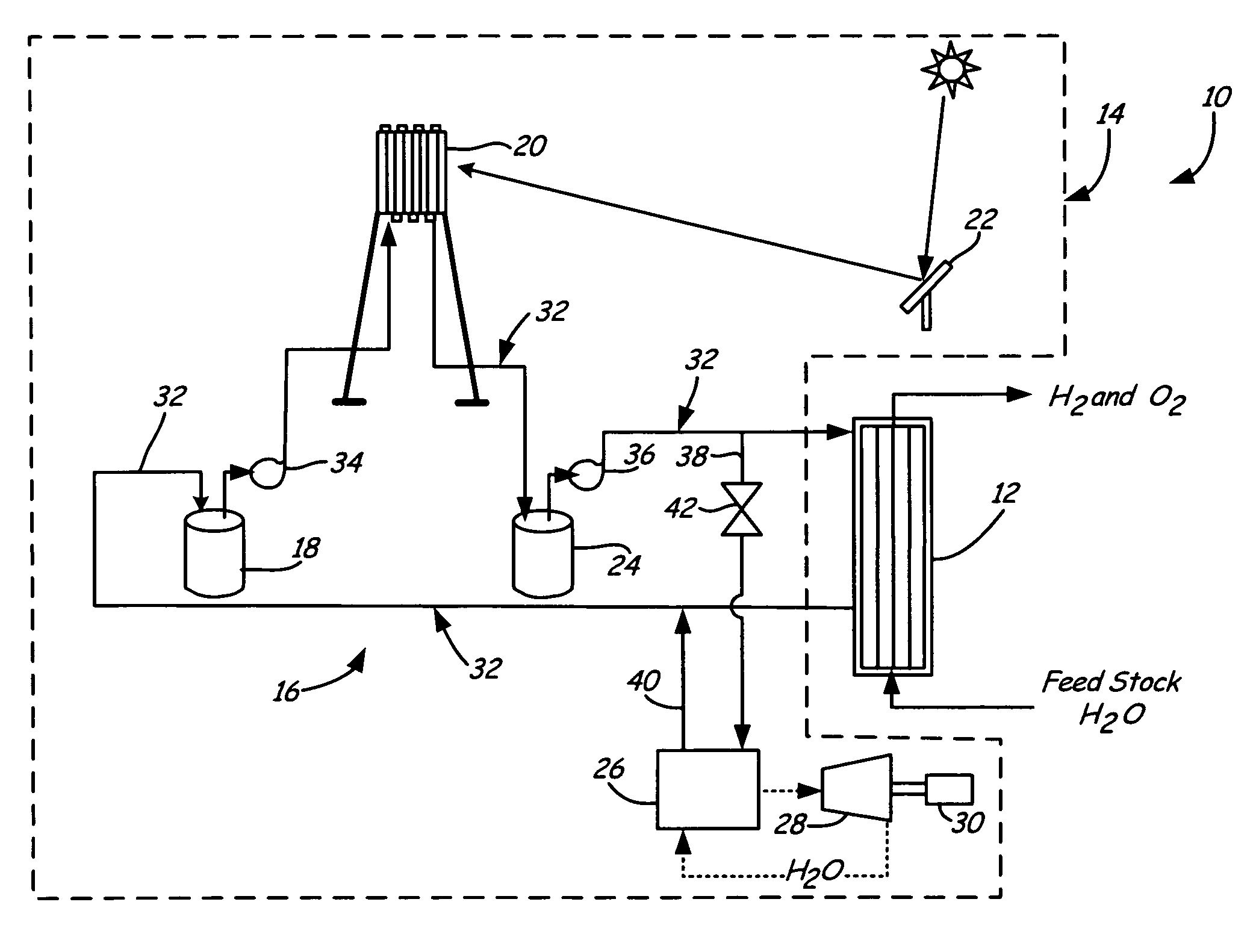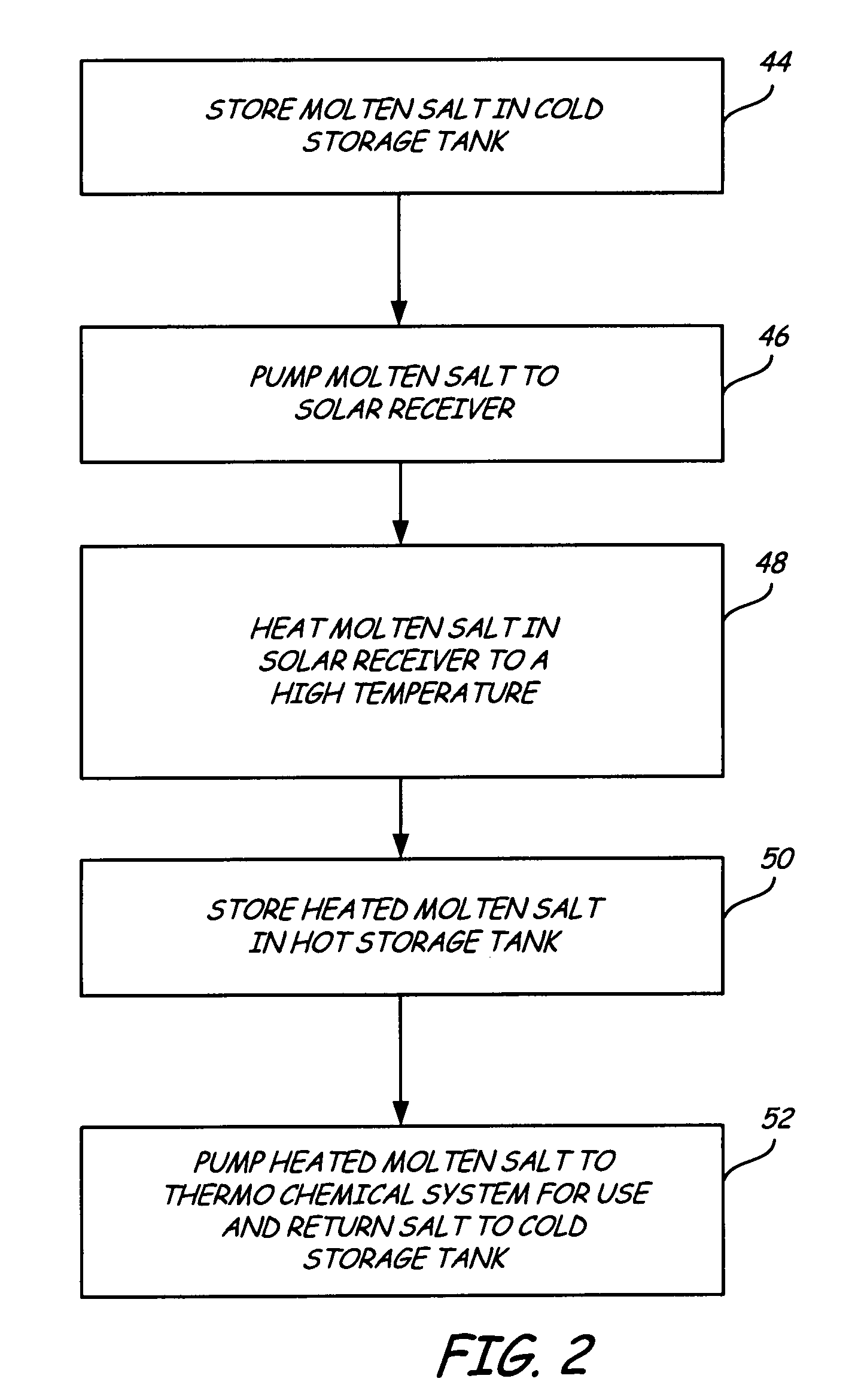Solar power for thermochemical production of hydrogen
a thermochemical and solar energy technology, applied in the direction of machines/engines, refrigeration machines, energy input, etc., can solve the problems of high plant capital costs, high plant availability, and net loss of total energy and pollution,
- Summary
- Abstract
- Description
- Claims
- Application Information
AI Technical Summary
Benefits of technology
Problems solved by technology
Method used
Image
Examples
Embodiment Construction
[0009]FIG. 1 shows a schematic of solar-powered hydrogen production system 10, which generally includes thermochemical system 12 and solar heating system 14. Thermochemical system 12 provides a low temperature process of producing hydrogen, eliminating the need for high temperature refractory materials and high concentrating solar thermal plant designs. Solar heating system 14 is capable of providing thermal and electrical energy to thermochemical system 12 up to 24 hours a day. The continuous use of thermochemical system 12 and solar heating system 14 in conjunction with one another allows for efficient use of thermochemical system 12 by avoiding restart problems and thermal transients. This increases the overall efficiency and asset utilization of solar-powered hydrogen production system 10, improving operating economics.
[0010]Thermochemical system 12 uses a copper chloride (CuCl) thermochemical cycle to produce hydrogen. The addition of several other steps allows for the producti...
PUM
 Login to View More
Login to View More Abstract
Description
Claims
Application Information
 Login to View More
Login to View More - R&D
- Intellectual Property
- Life Sciences
- Materials
- Tech Scout
- Unparalleled Data Quality
- Higher Quality Content
- 60% Fewer Hallucinations
Browse by: Latest US Patents, China's latest patents, Technical Efficacy Thesaurus, Application Domain, Technology Topic, Popular Technical Reports.
© 2025 PatSnap. All rights reserved.Legal|Privacy policy|Modern Slavery Act Transparency Statement|Sitemap|About US| Contact US: help@patsnap.com



